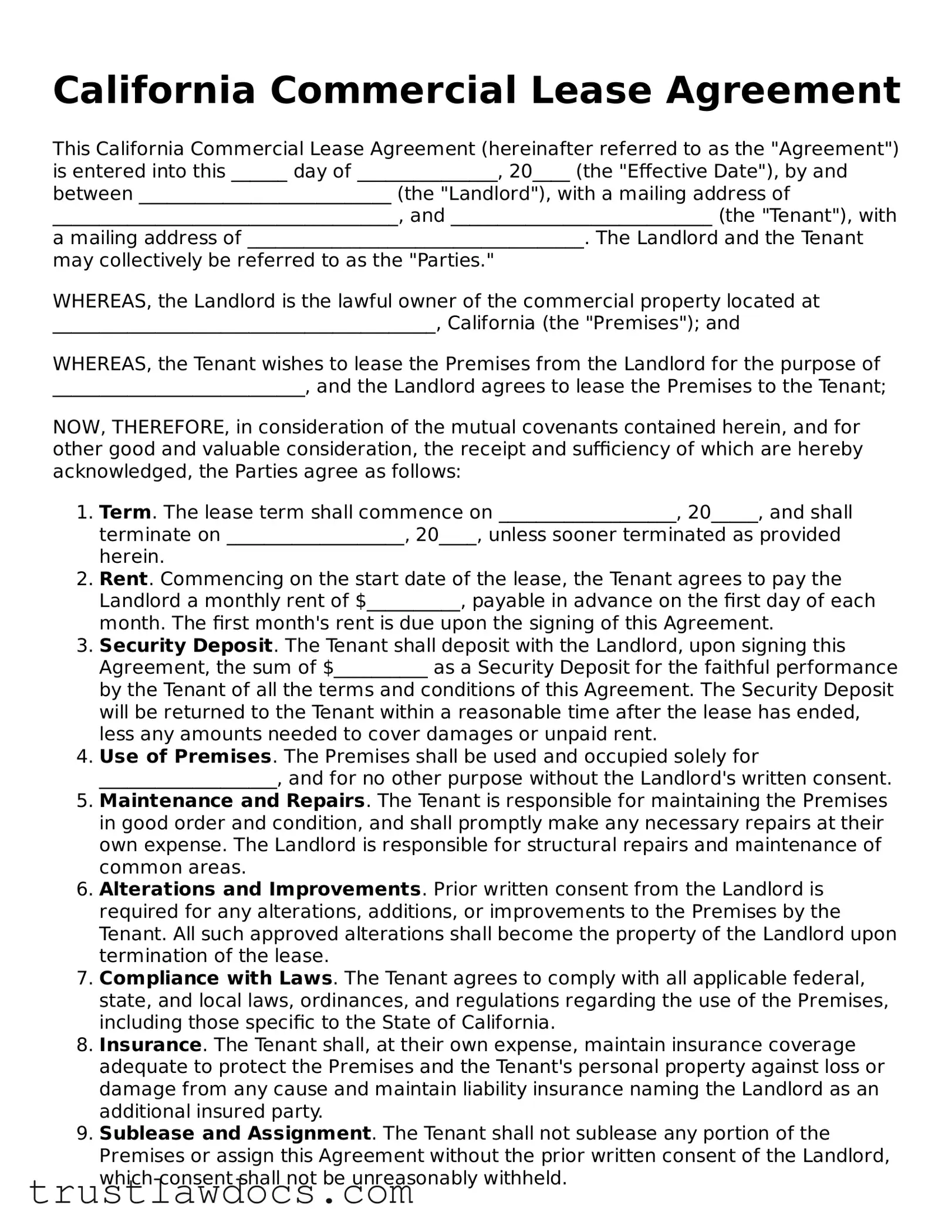What is a California Commercial Lease Agreement?
A California Commercial Lease Agreement is a legal document that outlines the terms and conditions under which a commercial property is rented. Landlords and tenants use this agreement for leasing property for commercial purposes, such as offices, retail spaces, warehouses, and other business-related premises. This document specifies rent payments, lease duration, property use restrictions, and responsibilities for repairs and maintenance.
How long can a lease term be under a California Commercial Lease Agreement?
In California, a commercial lease can be set for any length of time agreed upon by both the landlord and the tenant. Lease terms are often negotiated based on business needs and can range from a short term of 1 year to longer terms of 10 years or more. It's essential to carefully consider the lease duration since it affects many other lease provisions.
Are there different types of Commercial Lease Agreements in California?
Yes, there are several types of Commercial Lease Agreements in California, including gross leases, modified gross leases, and triple net (NNN) leases. The type chosen affects how costs such as property taxes, insurance, and maintenance are divided between the landlord and tenant. Gross leases typically have the landlord covering most costs, while triple net leases shift most expenses to the tenant.
What are the responsibilities of the landlord in a California Commercial Lease Agreement?
The landlord's responsibilities include maintaining the property's structural integrity, complying with health and safety regulations, and ensuring any agreed-upon services are provided. Specific duties can vary based on the lease type and any modifications made to the standard agreement. It's crucial for landlords to clearly outline their responsibilities in the lease to prevent disputes.
Can a tenant modify the leased property?
Tenants can usually make modifications to the leased property, such as painting or installing fixtures, with the landlord's consent. The lease agreement should specify the types of alterations allowed and whether the tenant must restore the property to its original condition at the end of the lease. It's important for both parties to discuss and agree on any modifications in advance.
What happens if a lease is breached by either party?
If a lease is breached, the non-breaching party has the right to pursue legal remedies. These may include terminating the lease, seeking damages, or demanding specific performance. The specific consequences and remedies should be detailed in the lease agreement, including any notice requirements and opportunities to cure the breach.
How can a California Commercial Lease Agreement be terminated?
A lease can be terminated according to the terms outlined in the agreement, such as at the end of the lease term or through early termination provisions if agreed upon by both parties. Lease agreements may also include conditions under which either party may terminate prematurely, such as lease violations or business closure. Proper notice must typically be given, as specified in the lease.
